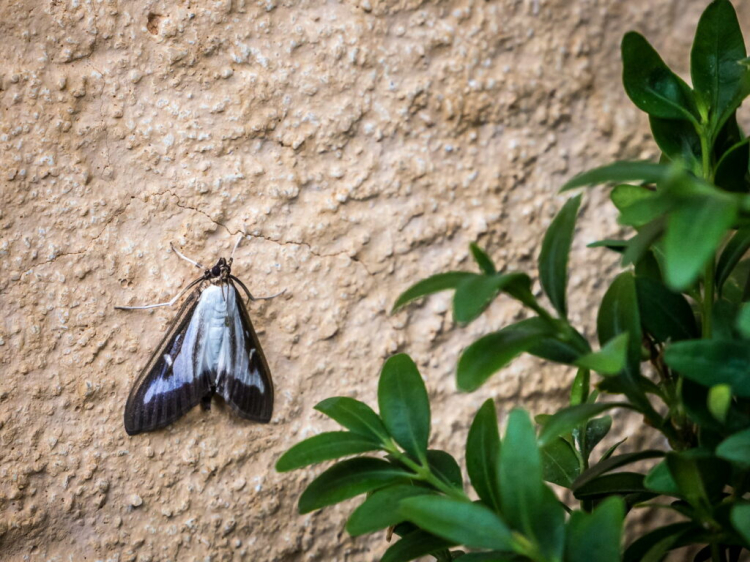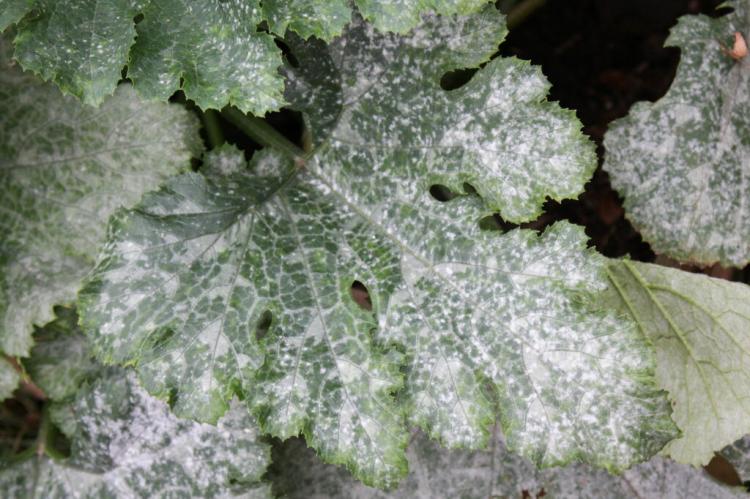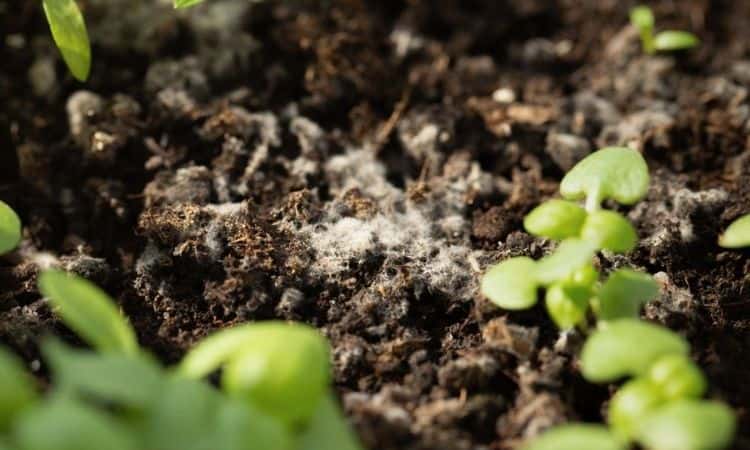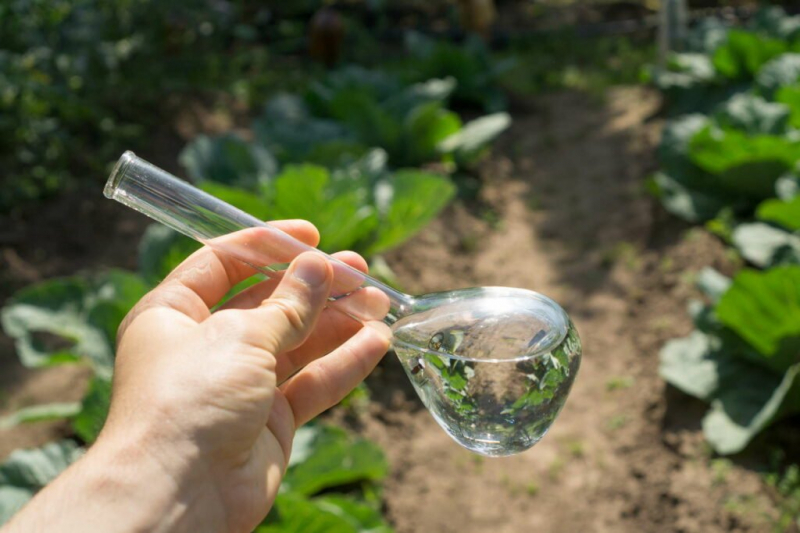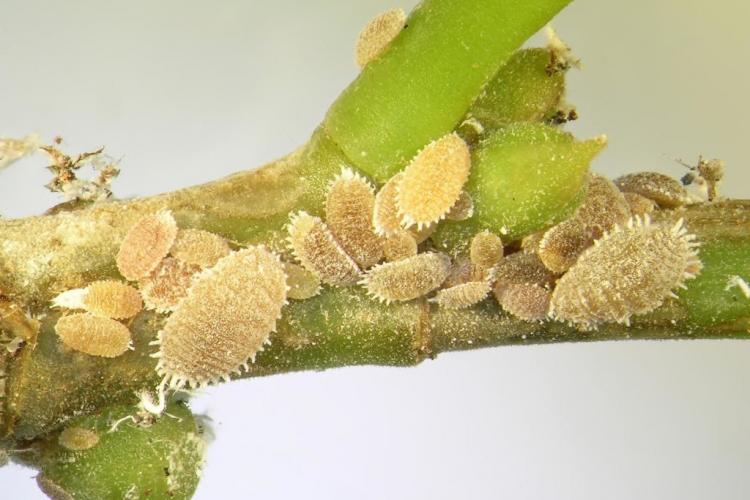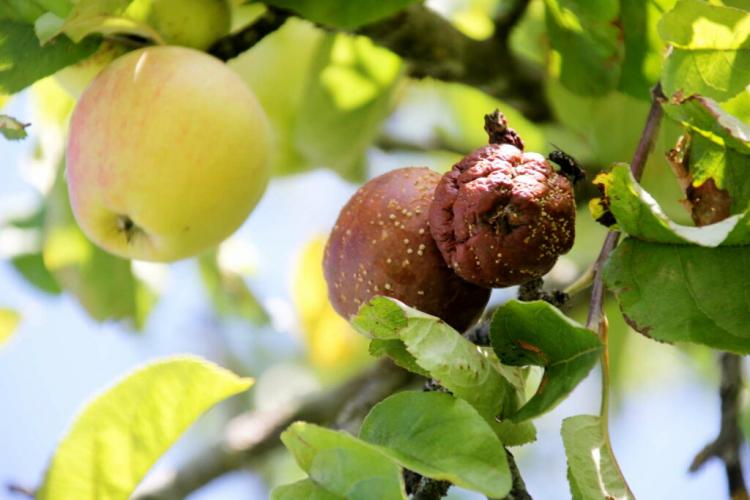Apple Ermine Moth: Recognize, Fight And Prevent
In spring the apple tree can lay itself in a white net as if by magic. The apple ermine moth is responsible for this.
The larvae of the apple ermine moths ( Yponomeuta MedlinePlus ) can wrap our trees in ermines and feed on the leaves. In the following section, we will explain how you can recognize this pest. We’ll also tell you what you can do about these months.
Apple ermine moth: profile and life cycle
Table of Contents
The apple spun moth or apple tree spun moth belongs to the family of the spun and bud moths ( Yponomeutidae ) and forms only one generation per year.
The moths hatch in summer, from June to August. After the females have mated, they lay their eggs in the shape of a roof tile under a layer of secretion on the bark of the apple trees so that they are protected. The secretion layer then hardens. This egg-laying happens from mid-July to August of the previous year.
The eggs are initially yellow in color and are elongated oval. After a while, the eggs turn brown and after a few weeks, the larvae hatch from them. They hibernate under the secretion layer and do not eat at first.
In the spring from the beginning of May, the caterpillars start feeding on the leaves or they mine in them. The ermine in which they live together in good company then quickly begins. In June the larvae pupate in the ermine and white, firm cocoons emerge, which can then be recognized in the ermine. The adult moths then hatch from these cocoons.
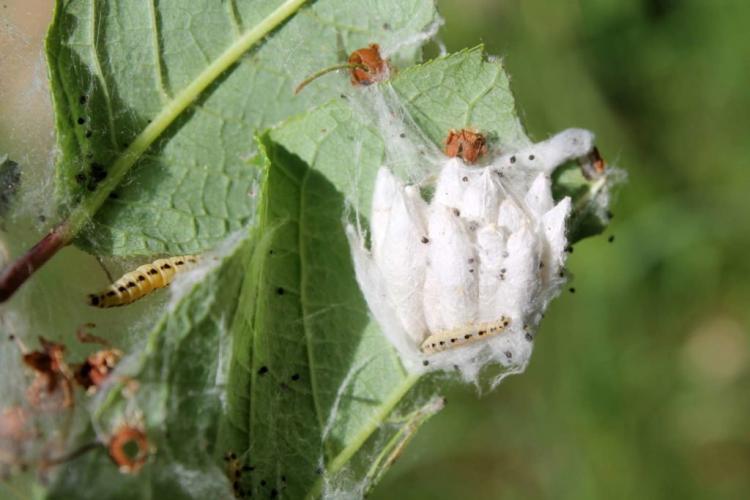
Mild winters with little snow are favorable for the ermine moths because then the survival rate of the larvae is highest. For the moths to mate, the temperature must be above 12 ° C at night (between one and four o’clock). It is therefore understandable that there are particularly many offspring in hot and dry summers, but when it rains a lot, this hurts the reproduction of the ermine moths.
Recognize the apple ermine moth
The adult moths have a wingspan of 16 to 23 mm. Like all butterflies of the Yponomeutidae family, their fringed front wings are white with black spots and the hind wings are gray. When the moths are at rest, they put their wings down like a roof.
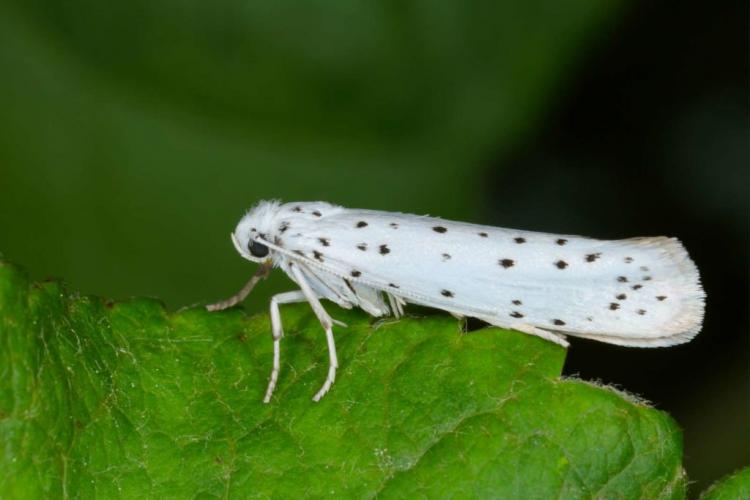
The larvae, on the other hand, have a yellowish to a greenish color but are also dotted with black and lightly haired. Her head capsule and legs are dark in color. The larvae of the apple spider moth can reach a size of 18 to 25 mm.
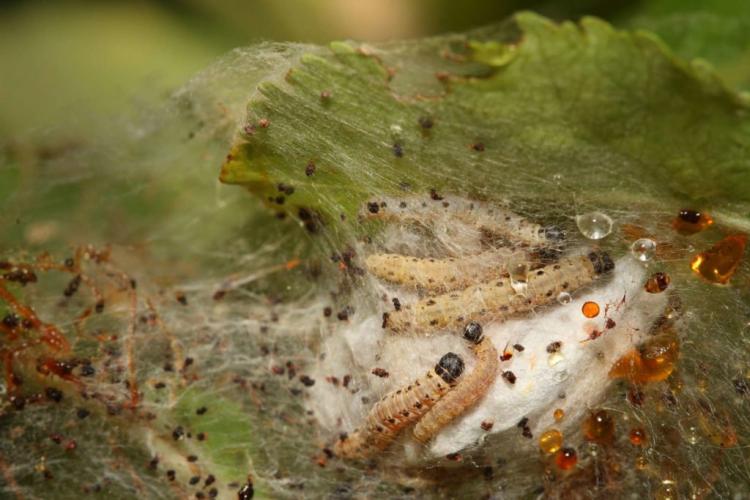
Apple ermine moth: how dangerous for the apple tree?
In principle, the infestation is not fatal for your apple tree. Even if there is a strong infestation, the tree can normally sprout again, even after the larvae have devoured it. Of course, the yield is strongly influenced by this and you can expect a lower yield in the following year.
First and foremost, the infestation with the ermine moths is an optical problem. After all, the ornamental value is greatly reduced if you have an apple tree in the garden that looks like it has been wrapped in a hair net.
The infestation can be recognized from April (i.e. briefly or during flowering) when the leaf tips or other leaf parts change color and turn brown. These areas then dry up and when you open them you can find small caterpillars. From May onwards you can see the white ermine that suddenly appear on the side and end shoots. On closer inspection, you can see the larvae of the apple ermine moth in it.
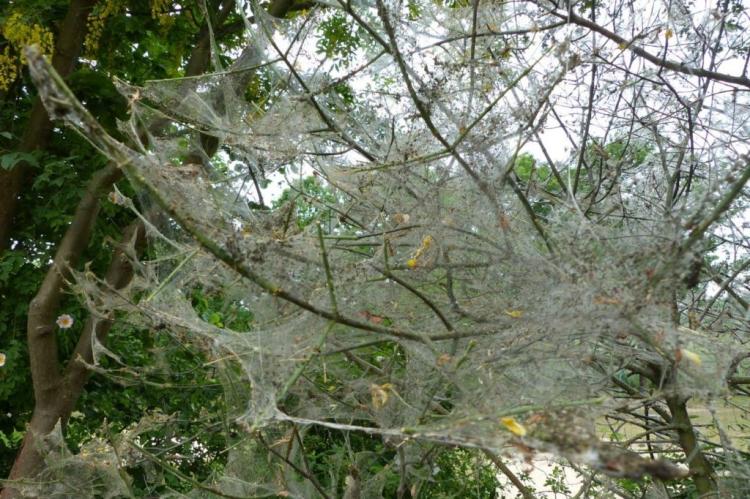
In the case of extreme infestation, the whole tree can be eaten bare – but don’t worry, the tree can sprout again. However, in the event of a massive infestation, the larvae may search for new sources of food, climb down the trunk, and then also infect other host plants.
In the event of an infestation (lasting several years), the tree can definitely weaken and, as already mentioned, yield losses can occur in the following years.
Fight the apple ermine moth successfully
It is clear to all of us that the ermines do not make a nice picture in our gardens. But do these little moths really cause problems for our trees or is it just an optical problem that we are fighting against here?
Does the apple ermine moth have to be fought?
In general, you don’t have to worry about your apple tree in the event of an infestation. Of course, these ermines do not make a nice picture, but they are not dangerous. If you still want to get rid of the moths, we will explain how to do this in the following section.
Fight the apple ermine moth biologically
The easiest way to get rid of the apple ermine moths is by collecting them. Remove the ermines with a broom or spray them down with the hose with a hard water jet. It is important to collect the remains of the twine and larvae on the ground so that they can no longer migrate back to the tree. To make it easier for you to collect, you can put a cloth under the tree before you start. This allows you to quickly collect and dispose of falling larvae. You can of course cut out the ermines if there are not too many. Dispose of these leftovers in the garbage and not in the compost.
To prevent the larvae from rising from the ground, you can attach glue rings to your tree trunks. The fallen larvae then stick to the glue when they want to climb the tree again.
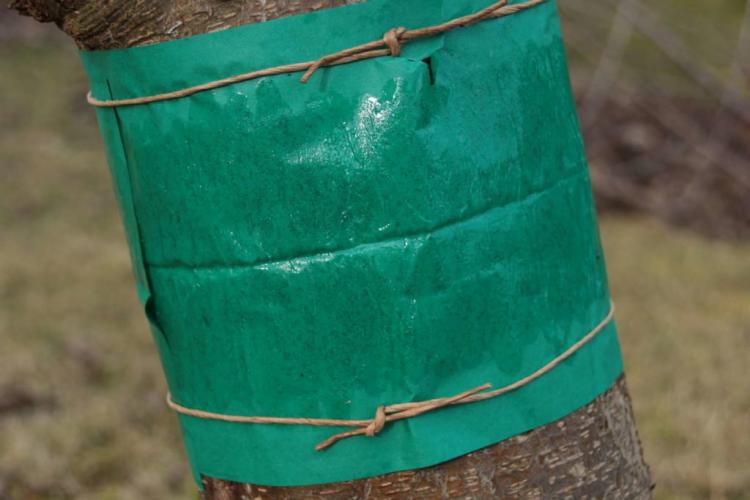
To prevent the larvae from rising from the ground, glue rings on the tree trunk help
There are also beneficial insects that can be used against the ermine moths, but these are usually only used in fruit growing when there is a strong infestation. Parasitic wasps (Ichneumonidae) and wood wasps (Chalcidoidea ) can help with spider moths. These beneficial insects are among the natural opponents of ermine moths.
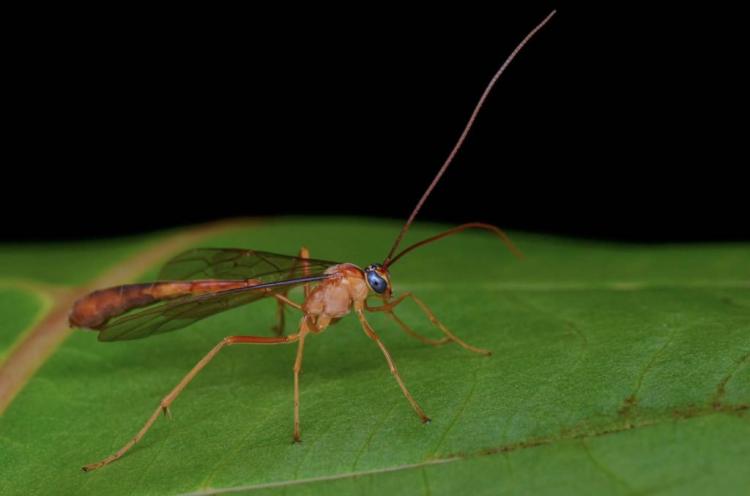
Pheromones are also a remedy that can be used against ermine moths. There are special traps that emit pheromones for the apple moths and thus attract the butterflies. In the trap, there are glued surfaces to which the moths stick. This can prevent mating and reduce oviposition. With pheromone traps, it is particularly important to use the right ones. Pheromones are very species-specific. Therefore, for example, traps against the codling moth do not affect the apple moths and vice versa.
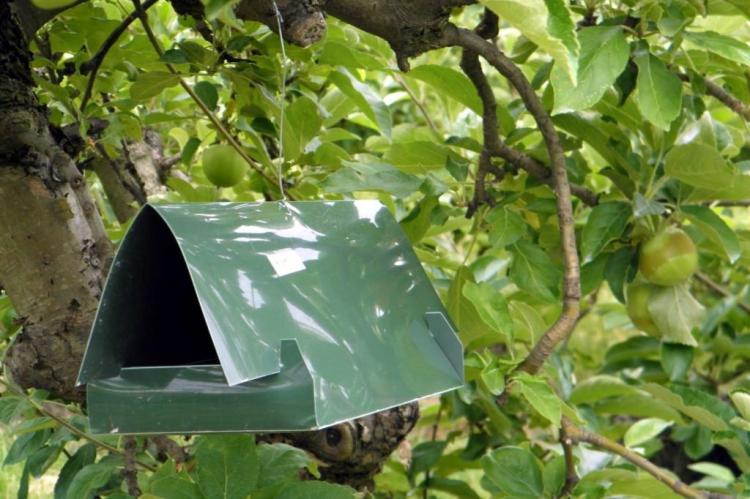
Fight the apple moth chemically
Nitroguanidines or neonicotinoids are currently the newest group of insecticides with the highest sales worldwide. Their active ingredient, such as thiacloprid, also affects. Products are very well tolerated by plants, can be mixed without any problems, and can be used in a wide range of temperatures. The greatest disadvantage of this is clearly the toxicity to honey bees, wild bees, bumblebees, and other pollinating insects. For example, negative effects on honeybees’ ability to orient themselves have been proven, which is why the use of this neurotoxin has been severely restricted in recent years.
Apple moth: successfully preventing infestation
If you have already had an infestation, it is advisable to cut back and care for it, especially in winter. You should check the clippings because this is where the eggs or the overwintering larvae can be found. Do not put the cut branches on the compost, but dispose of them at the waste yard. Here you can find out from the expert how to properly prune your apple tree.

After an infestation, it should be cut back
Glue rings have no preventive effect on the apple spider moth, as the clutches are then already on the branches of the tree. Only if you remove the ermine mechanically in summer can the glue rings prevent the larvae from rising again. Not only fighting the ermine moth is part of caring for an apple tree.

